Subscribe to Green Tea Podcast:
Japanese Tea vs Indian Tea - 10 Battles You Don't Want to Miss
India and Japan both have a love of tea that spans many centuries. The plant, Camellia sinensis, is popular in both India and Japan and is used to produce most types of tea, such as black, green, and white tea. However, there are many kinds of herbal teas that are also consumed in both cultures. This love of various teas is woven into the fabric of the history and culture of India and Japan.
Even though I am Japanese, I personally love India and Indian tea. I had a great opportunity to live in India (Chandigarh) for close to a year all together, and from the experience, I was introduced to all the different teas in India.
This article is based on my experience and research for my love of both Indian and Japanese tea, comparing teas from both countries.
We will take a look at the many factors that show why tea is such a popular drink in these countries and how well Japanese tea and Indian tea will fair in a battle against each other.
1. History: India’s Tea History is Ancient

Tea became known in Japan around the 9th century. Tea seeds were brought from China, and the planting of them was greatly encouraged.
For Indian tea, the first record of tea consumption in India was between 750 and 500 BCE in the ancient Indian epic poem, the Ramayana. It’s possible that tea consumption started much earlier than this; however, after the mention of tea in the Ramayana, there are no further records of tea consumption until the first century.
In the sixteenth century, Dutch travelers recorded Indian use of the Assam tea plant as both a food and to brew tea. Later, the arrival of the British East Indian Company brought large-scale production of tea to Assam, India. By the start of the twentieth century, the top tea producer in the world was Assam.
Indian tea consumption predates that of Japan.
2. Culture: The Japanese Tea Ceremony is an Exercise in Meditation
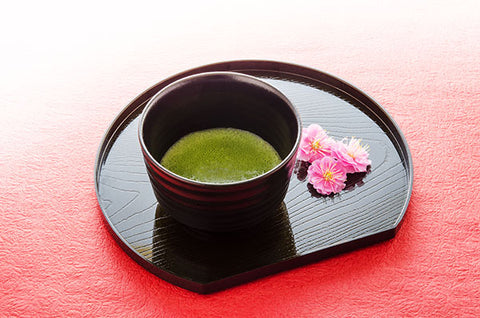 Picture of matcha served at Japanese Tea Ceremony
Picture of matcha served at Japanese Tea Ceremony
The Japanese tea ceremony, called the Way of the Tea, is one of the most elegant and beautiful cultural rituals in the world. The ceremony is a series of choreographed movements that are more about focus and intent than drinking tea. It is said that the one preparing the tea must do so from the heart.
This tea ceremony was first recorded to have begun in the sixteenth century. The teachings of Zen Buddhism saturate this practice, which can be seen in the four principles that are central to its’ spiritual aspects. These principles are harmony, respect, purity, and tranquility.
3. Types: Japan Tea Comes in Many Varieties
 Picture of Aracha - one of the many Japanese tea types available
Picture of Aracha - one of the many Japanese tea types available
There are well over twenty different types of tea in Japan. With the history of tea in Japan spanning over a thousand years, this isn’t surprising. The Japanese have mastered the art of tea cultivation. Let’s take a look at just a few of the types of tea popular in Japan.
Matcha
Tea plants grown under shade are used to make this tea. This process allows the tea leaves to produce more chlorophyll. The additional chlorophyll gives the tea an intense green color. Matcha is the tea commonly used in tea ceremonies.
Sencha
Sencha is green tea made from tea plants grown in the sun. It is consumed hot or with ice and is the most popular tea in Japan.
Aracha
Aracha translates to "wild tea" in English. Aracha is green tea, where the process of green tea keeps the original shape as it is cropped. Most green teas consumed are refined and processed. In Japan, green tea is usually sold from the farmer to the wholesaler, where the wholesaler processes and refines the tea. When green tea is provided to the wholesaler, the form of the tea is usually aracha, where it has not been processed yet. This type of green tea is usually not distributed to consumers. However, due to being able to enjoy a rich and natural taste and flavor, some fans prefer drinking this type.
Here are some more types of Japanese green tea that are popular and available.
How about Indian tea? Just like Japanese tea, Indian tea is full of health benefits. Here are a couple of examples of Indian tea types known for their health benefits.
Assam tea
Assam tea is a black tea that is rich in antioxidants. These antioxidants can help prevent certain types of cancer. In addition, Assam tea can improve cognitive function, increasing mental alertness.
Nilgiri tea
Nilgiri tea is rich in flavonoids and antioxidants. These two elements, respectively, help to maintain blood sugar and improve cardiovascular health.
Chai tea
Chai tea is a combination of black tea and spices. Ginger, cinnamon, cardamom, fennel, black pepper, and clove are blended with black tea to produce a potent drink with health benefits. It can help reduce nausea, improve digestion, and reduce inflammation. It is also high in antioxidants, which can help prevent cancer and cardiovascular issues.
4. Aesthetics: Japanese Tea uses more machinery
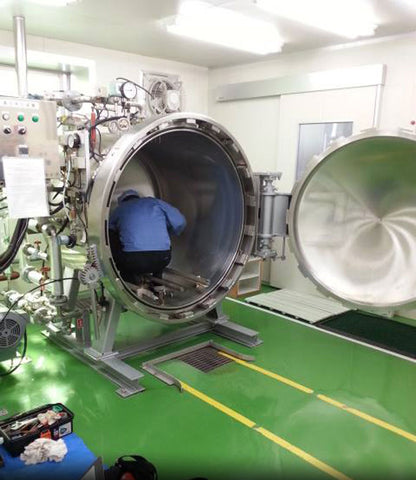 Equipment used for oxdizing pu-erh diet tea at Arahataen inc.
Equipment used for oxdizing pu-erh diet tea at Arahataen inc.
Most Japanese tea cultivation and processing are done by machines, whereas most Indian tea cultivation is still done manually without machinery. Though there are a few framers in Japan who handpick tea to ensure the best quality, most of the tea you see in grocery stores is mass-produced using machines.
5. Flavor: Indian Tea is Packed with Flavor
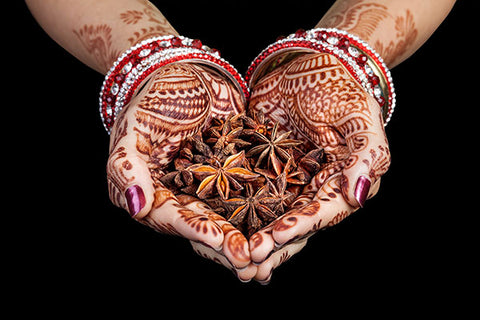
India produces some of the most flavorful teas in the world. The distinct spices of chai tea, along with the milk that is sometimes added, lend to its’ soothing and warm flavor. The taste of chai is so pleasant that it has become a popular drink in many countries outside of India.
The savory butter tea, or gur gur, is made from tea leaves, butter, water, and salt. It is so delicious that Himalayan nomads drink almost forty cups a day.
Another Indian tea well known for its flavor and popular all over the world is Darjeeling tea. It has hints of a fruity smell and flavor that require no additional ingredients to enjoy.
6. Cost: The Surprising Price Differences Between Japanese and Indian Teas
According to a statistical report by Statista, in 2016, the average cost for one hundred grams of green tea in Japan was four hundred and ninety-one yen ($4.35 USD). Statista also reported that in 2015, the average cost for one thousand grams of tea in India was two hundred and two Indian rupees ($2.95 USD).
As you can see, the cost of tea in India is significantly lower than it is in Japan. This is partly due to the size of the country and India’s ability to produce larger quantities of tea.
7. Impurities: Japanese Tea is Some of the Purest Tea in the World
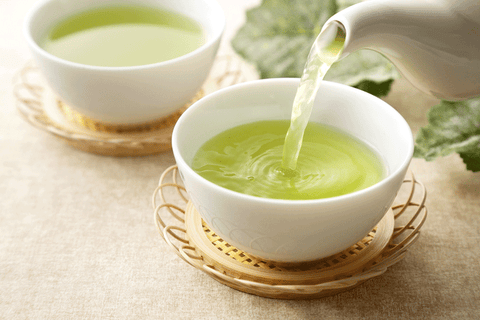
A 2014 Greenpeace India study revealed the presence of pesticides in leading brands of tea sold in India. These pesticides result in acute and chronic toxicity. In contrast, the chance of fewer pesticides in Japanese tea is related to their tea-growing practices.
Black tea from India is also known to contain traces of lead, a toxin that can affect all organs in the human body. According to the Journal of Toxicology, to avoid lead exposure, the safest tea to drink is organic green tea from Japan.
8. Popularity: The Popularity of Indian Tea Reaches Beyond the Borders of India

Without question, teas that originated in India have gained popularity around the globe. Chai and Darjeeling teas are flavorful and aromatic teas common in many tea and coffee shops. The tea most popular in Japan and perhaps the one Japan is most renown for, green tea, didn’t have its origins in Japan but rather originated in China.
9. Weight loss: The Effectiveness of Japanese Tea for Weight Loss
 Diet Pu-erh tea contains more diet element than any other tea in the world
Diet Pu-erh tea contains more diet element than any other tea in the world
Japanese green tea is known for its ability to help with weight loss. Catechins are flavonoids present in green tea that boost metabolism, helping your body break down fat more quickly. Potent types of catechins are called EGCG. Caffeine, another component of non-herbal teas, causes the body to burn calories by increasing energy levels. EGCG and caffeine work in unison.
Japanese drink green tea frequently, starting with their first meal and throughout the day. The regular consumption of this fat-fighting tea could be one of the reasons Japan doesn’t have an issue with obesity.
10. Aesthetics: The Timeless Beauty of Japanese Tea

Aesthetics is a formally established discipline in Japan that extends beyond the art of the tea ceremony. Outside of this elaborate ritual, Japanese take pleasure in ornate teapots, cups, and saucers, as well as blossoming herbal foods where a dried flower unfolds after it’s placed into a clear pot or cup. The sight can be as meditative as it is beautiful.
There are no losers when it comes to Japanese tea and Indian tea. Both cultures have produced teas that are and will be enjoyed throughout the world for many years to come.
Both teas matched up when it came to health-related properties and shared other similarities. Yes, they did differ in taste, pricing, impurities, and culture, but overall, it comes down to what you like.
Which one is your cup of tea today?
Get Free Bonus Books




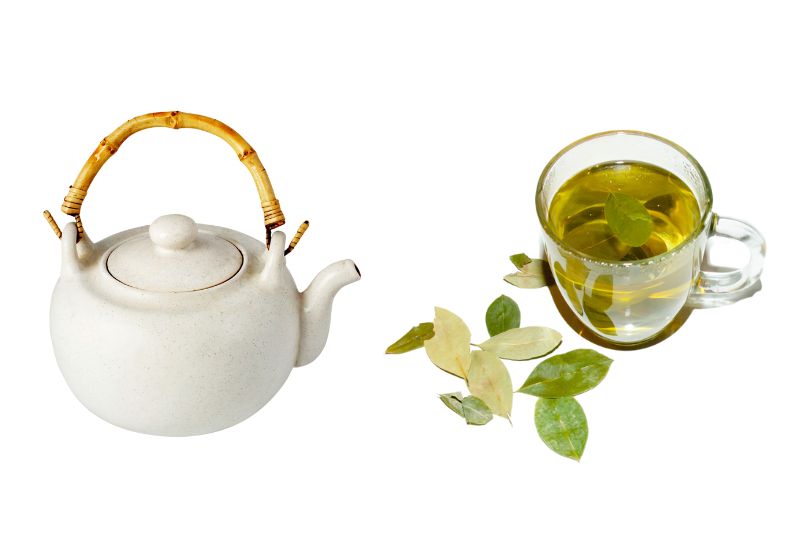

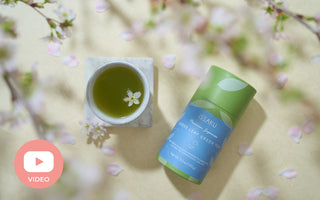
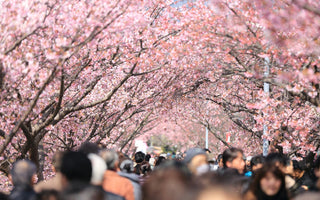
Hi Diana,
Thank you very much for your interest. We find this decaf green tea to be very good from our sister company: https://shizuokatea.com/s-gtp/gtp-s-decaf.php
May I recommend this one?
Thank you very much,
Kei Nishida
Japanese Green Tea Co.
I am looking for a Japanese green tea that is decaf with water process or if none then carbon dioxide and is loose leaf. I have osteoporosis so caffiene is not the best for me. I cannot find any please help.